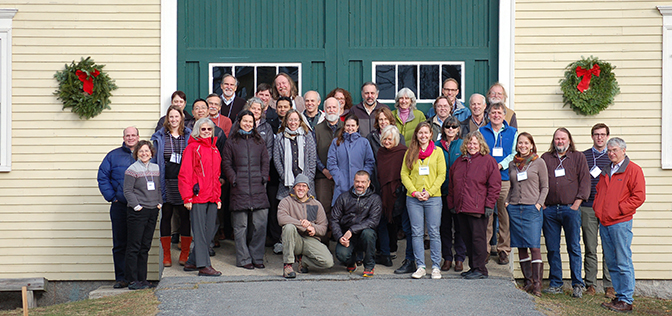The Wrack
The Wrack is the Wells Reserve blog, our collective logbook on the web.
The Wrack is the Wells Reserve blog, our collective logbook on the web.

WELLS, Maine, December 8, 2014 — Scientists from around New England met at the Wells National Estuarine Research Reserve on December 5 for a workshop focused on “blue carbon” science and policy. For the first time, scientists from throughout the region gathered to share research results, identify gaps in knowledge, and plan future collaborations involving carbon in coastal habitats.
The term “blue carbon” refers to the ability of salt marshes, seagrass meadows, and mangrove forests to take up and store carbon dioxide and other greenhouse gases from the atmosphere. Coastal wetlands capture carbon and store it at rates even greater than rainforests.
“Carbon held naturally in coastal wetlands is not entering the atmosphere as a greenhouse gas, so these habitats have real potential to mitigate climate change,” said Dr. Kristin Wilson, Wells Reserve research director, who co-coordinated the workshop.
Wilson said the scientists who met in Wells are documenting how greenhouse gases behave in coastal wetlands, information that is also needed by their policy-oriented colleagues. Together, their goal is to insert coastal blue carbon into global carbon markets and, ultimately, to enhance salt marsh and seagrass conservation and management.
The workshop was co-hosted by the Wells Reserve and Bates College and supported by a $15,000 grant from the National Estuarine Research Reserve System Science Collaborative.
Wilson added that the Wells Reserve is contributing to blue carbon science by leading an effort, funded by a $36,097 grant from the international Commission for Environmental Cooperation, to learn how much carbon is stored in marsh soils from eight states across the country. Preliminary results are expected in spring 2015, she said.
The Wells Reserve at Laudholm, dedicated in 1986, is a 2,250-acre research site with a goal to protect and restore coastal ecosystems around the Gulf of Maine. Its work is supported primarily by the nonprofit Laudholm Trust and the National Oceanic and Atmospheric Administration. More information about both the reserve and blue carbon is available at wellsreserve.org.